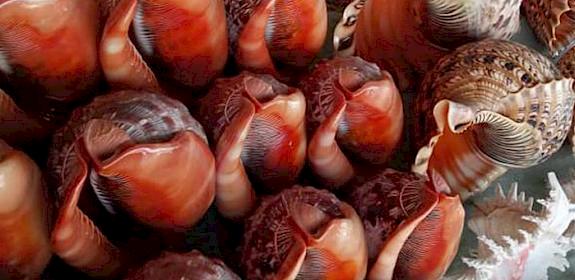New CITES shark listings welcomed; "Now the Real Work Begins"
Hong Kong, 4th October 2017—Four additional shark species, including all species of thresher sharks and the silky shark, today became officially protected under the Convention on International Trade in Endangered Species of Wild Fauna and Flora (CITES), although TRAFFIC and WWF caution that progress in protecting such threatened species will only be meaningful if previous and current measures are implemented effectively.
The species have been listed in Appendix II of CITES, which means that all international trade involving them must be closely regulated. These sharks, and the products from them, can now only be exported when taken from national and international waters if the exporting/fishing country certifies they were legally sourced and that the overall level of fishing does not threaten the survival of the species.
The four species–three thresher sharks and the silky shark–are the latest of 20 species of sharks and rays to be protected by CITES since 2003. A decision by the Parties to CITES to list the species took place in October 2016, but countries were given a one-year grace period to accommodate the new regulations.
Regulation Implementation Needed
Dr. Andy Cornish, Shark & Ray Initiative Leader, WWF International, noted that while several countries have completed non-detriment findings (NDFs), which scientifically review whether trade will endanger a certain species, many nations have not done this yet for listings that occurred in 2013. The four new shark species also require NDFs.
“Now the real work begins,” said Dr. Cornish. “While some controls on fishing these species exist, they have largely been inadequate to prevent serious population declines. We anticipate that many countries and regional fisheries management bodies will need to tackle overfishing through new management measures to allow population recoveries. The sooner they do so, the sooner the prospect of sustainable fisheries,” he said.
TRAFFIC’s Fisheries Trade Programme Leader Glenn Sant agreed, adding that while the wildlife trade monitoring network welcomed the listings commencement, the occasion marked a starting point, not an end goal. “It’s now onto the next steps, such as assisting countries in the management of these species to ensure where products are in trade, that they come from legal and sustainable sources, and that adequate traceability is in place to confirm the products are from those sources,” said Mr. Sant.
Silky shark is a pelagic species threatened by overfishing for its fins and meat. Its mortality is considered to be under-reported and largely unmanaged. The silky shark is classified as “Near Threatened” on the International Union for Conservation of Nature (ICUN) Red List of Threatened Species. Thresher sharks are also at risk due to demand for their meat and fins. The three thresher species’ mortality is similarly considered to be under-reported and largely unmanaged. ICUN classifies the threshers as “Vulnerable.”





